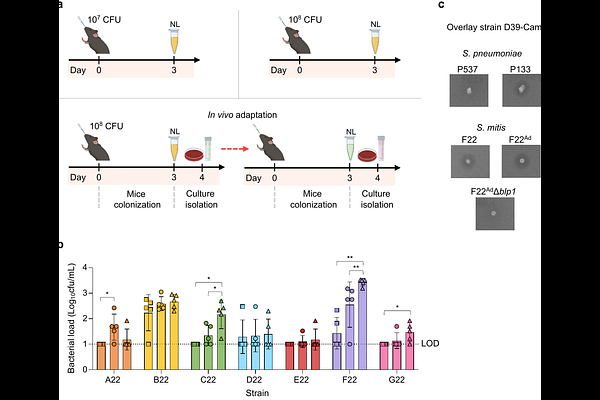Bacteriocin-mediated prevention of secondary pneumococcal pneumonia by a human commensal Streptococcus mitis strain

Bacteriocin-mediated prevention of secondary pneumococcal pneumonia by a human commensal Streptococcus mitis strain
Candeias, C.; Lanca, J.; Alenquer, M.; Bras, D.; Valente, C.; Amorim, M.-J. J.; Sa-Leao, R.
AbstractStreptococcus pneumoniae remains a major public health threat despite widespread use of vaccines and antibiotics. Its well-established synergy with influenza A virus (IAV) often results in secondary bacterial pneumonia, a condition associated with high morbidity and mortality. As pneumococcal pneumonia is invariably preceded by nasopharyngeal colonization, preventing colonization represents a promising intervention strategy. Current approaches, including pneumococcal conjugate vaccines and antibiotics, can drive serotype replacement and antimicrobial resistance, underscoring the need for novel, targeted, and serotype-independent alternatives. We previously identified seven commensal streptococcal strains (S. oralis A22 and S. mitis B22-G22) that robustly inhibit S. pneumoniae growth and biofilm formation in vitro. Here, using a murine model, we demonstrate that colonization with the commensal strain F22Ad significantly reduces pneumococcal density in the nasopharynx by day 10 post-infection and prevents pneumococcal dissemination to the lungs following IAV co-infection. This protective effect was dependent on bacteriocins encoded at the blp1 locus. Among these, Bac2v1 (alone or in combination with Bac1) significantly reduced pneumococcal colonization. Notably, Bac2v1 exerted serotype-independent inhibitory activity, impairing the growth of diverse pneumococcal strains. Our findings provide the first in vivo proof-of-concept that commensal streptococci, and specifically their bacteriocins, can disrupt S. pneumoniae colonization and prevent progression to secondary bacterial pneumonia. This work introduces a previously unrecognized precision-based approach to pneumococcal disease prevention, offering a potential complement to current strategies.